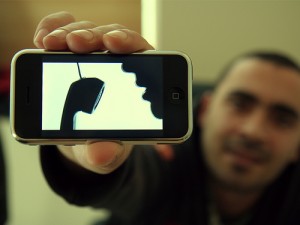BY FREDDI MACK — “Reinventing the wheel” is a common idiom connoting unnecessary or redundant developments. But when is “reinvention” of a product considered unlawful copying, and when is it considered a valid exercise of fair-market competition?
While this theme permeated the landmark Apple v. Samsung trial, the verdict ultimately came down to a test of “substantial similarity” between Apple’s iPhone patents (including the icon display and some touch responses, such as the “bounce back” feature) and Samsung’s subsequent products. Jury foreman Velvin R. Hogan, himself a patent holder and self-proclaimed “PC person,” claims that in light of the legal standards, the evidence heavily supported an outcome in Apple’s favor. Specifically, he recounts deciding, “I could defend this if it was my patent.” Hogan’s perspective on patents may have been valuable to a jury overwhelmed by tech jargon, but it has also raised concerns of impropriety.
Here’s a breakdown of the decision:
Were Apple’s patents valid?
- The jury had to consider whether Apple’s designs were really “new.” In doing so, they had to determine what Apple knew about “prior art”—that is, preexisting technology and anticipated developments—and whether a “designer of ordinary skill” would have combined the prior art to come up with the same design. For Hogan, the critical moment came when he realized that Apple’s software would not have worked on Samsung’s preexisting processor. Hogan noted, “They’re not interchangeable, and that just changed everything.” This distinction led the jury to conclude that Apple’s technology was in fact new, and that every single patent was valid.
Did Samsung infringe upon Apple’s patents?
- The jury used a series of methodical tests to determine whether the designs were substantially similar in the eye of an ordinary observer. One such method involved having a juror “hold one [phone] out in front of us, face out; put it back to his chest. Hold the other [company’s phone], and put it back to his chest…. We did that for each and every one of the phones.” As for the willfulness element, the jurors considered evidence including an email from a Samsung designer analogizing the difference between Apple and Samsung products to the “difference of Heaven and Earth.” Ultimately, the jurors found that Samsung infringed on Apple’s patents in the vast majority of the challenged devices.
The jury awarded Apple $1.05 billion in damages, and an injunction is pending. To Hogan, the award symbolizes the importance of intellectual property protection: “We wanted to make sure the message we sent was not just a slap on the wrist. We wanted to make sure it was sufficiently high to be painful, but not unreasonable.”
In response, Samsung has stated, “It is unfortunate that patent law can be manipulated to give one company a monopoly over rectangles with rounded corners, or technology that is being improved every day by Samsung and other companies.” Contrarily, Hogan defends the jury’s position, advising Samsung, “You’ve got a collection of some of the most innovative engineers on the globe. […] Use their ability to your advantage, and you just might be innovative enough to come up with something better than Apple.”
Something better, perhaps, than the wheel.






